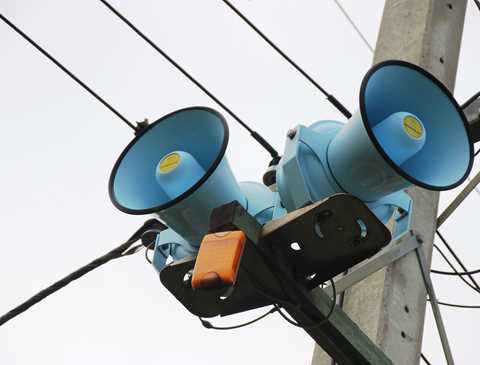If you’re still napping around midday on Easter Sunday, enjoying the extra hour of sleep daylight saving brings, be prepared for a harsh wakeup call if you live in the Rodney, Waitākere Ranges or Hibiscus and Bays areas.
Auckland Emergency Management (AEM) will be testing the region’s tsunami siren network on Sunday, April 4.
The twice-yearly test will start at noon and ensures the siren network is working as it should. During the test, the sirens may sound a number of times for a maximum of 10 minutes.
“Auckland rests comfortably between two harbours, making the region vulnerable to different natural hazards,” says Auckland Emergency Management’s General Manager, Kate Crawford.
“Tsunamis are an ever-present threat and it’s important we test these warnings systems regularly to make sure they are working, and so local residents recognise the sound, know what it is and what they should do,” she said.
“During the testing there is no cause for alarm and no action is required by the public.
“After the recent swarm of strong earthquakes, it’s a timely reminder to Aucklanders living in “at-risk” areas to always be prepared and have a plan.”
What if there isn’t a siren near me?
It is important to remember sirens are not installed in all coastal communities. They are just one of many tools Auckland Emergency Management would use to alert the public of a tsunami emergency.
If you do not have a siren in your area, there are multiple other official channels that will be used to send alerts and warnings to make sure as many people as possible receive the information they need; Emergency Mobile Alert (EMA), radio, television, or social media.
There are also several natural warnings you can look for if you live by the coast.
If you feel a strong earthquake that makes it hard to stand up or a weak rolling earthquake that lasts a minute or more, see a sudden rise or fall in sea level, hear loud or unusual noises from the sea, don’t wait for an official warning. Go immediately to the nearest high ground or as far inland as you can, taking the route that is quickest for you.
What will happen if there is a tsunami and I need to evacuate?
Find out if you are in an evacuation zone here.
Auckland has three tsunami evacuation zones:
Red shore exclusion zone: Covers the beach and adjacent low-lying areas that may be at risk during a “Beach and Marine Threat”, similar to what most of the region experienced on 5 March.
Orange evacuation zone: May need to be evacuated if there was a “Land Threat” from a medium- to large-scale tsunami.
Yellow evacuation zone: Covers the largest area that would need to be evacuated in the event of a “Land Threat” from a maximum-impact tsunami.
If you are required to evacuate, you should always follow the instructions of the emergency services. You will need to evacuate to higher ground or as far inland as possible, to an area not covered by the evacuation zones. If you are not in an evacuation zone, you do not need to evacuate.
Create an emergency plan for your home and whānau and practice it so everyone knows what to do in an emergency and what you need to take if you are evacuating. If you need help with your plan, check out getready.govt.nz.
Where are the sirens?
RODNEY:
Omaha, Point Wells, Whangateau
HIBISCUS AND BAYS:
Waiwera & Ōrewa
WAITAKERE:
Te Henga/Bethells Beach, Piha (north and south), Karekare, Huia, Little Huia, Whatipu, Te Atatu (north and south) & Herald Island




